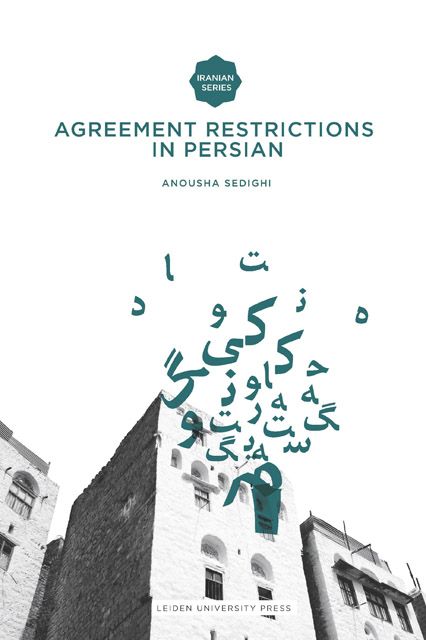
-
The digital format of this book is no longer available to purchase from Cambridge Core. Other formats may be available.
-
Select format
-
- Publisher:
- Amsterdam University Press
- Publication date:
- Invalid date
- November 2010
- ISBN:
- 9789087280932
- Dimensions:
- Weight & Pages:
- Dimensions:
- Weight & Pages:
- Series:
- Iranian Studies Series
- Subjects:
- Historical Linguistics, Language and Linguistics
You may already have access via personal or institutional login- Series:
- Iranian Studies Series
- Subjects:
- Historical Linguistics, Language and Linguistics
Book description
Agreement Restrictions in Persian is the first comprehensive attempt to tackle the issue of verbal agreement in Persian from a cross-linguistic point of view. Persian is a field of research within theoretical linguistics that is yet to be sufficiently explored. This book adopts the Minimalist Program of Chomsky (1995-2004) which is at the forefront of recent theories of formal syntax and applies it to the Persian language.
Although it is commonly believed that in Persian the verb agrees with the subject, several constructions seem to constrain this obligatory rule. Adopting the framework of Distributed Morphology, the author argues that agreement is in fact obtained with the plural inanimate subjects but a morphological rule may block the result. Unlike the previous analyses which consider the experiencer as the subject of the psychological constructions, the author argues that the psychological state is the subject of the sentence. The findings of this book not only contribute to better understanding of Persian syntax, but also have important implications for grammar theory.
Contents
Metrics
Full text views
Full text views help Loading metrics...
Loading metrics...
* Views captured on Cambridge Core between #date#. This data will be updated every 24 hours.
Usage data cannot currently be displayed.
Accessibility standard: Unknown
Why this information is here
This section outlines the accessibility features of this content - including support for screen readers, full keyboard navigation and high-contrast display options. This may not be relevant for you.
Accessibility Information
Accessibility compliance for the PDF of this book is currently unknown and may be updated in the future.

